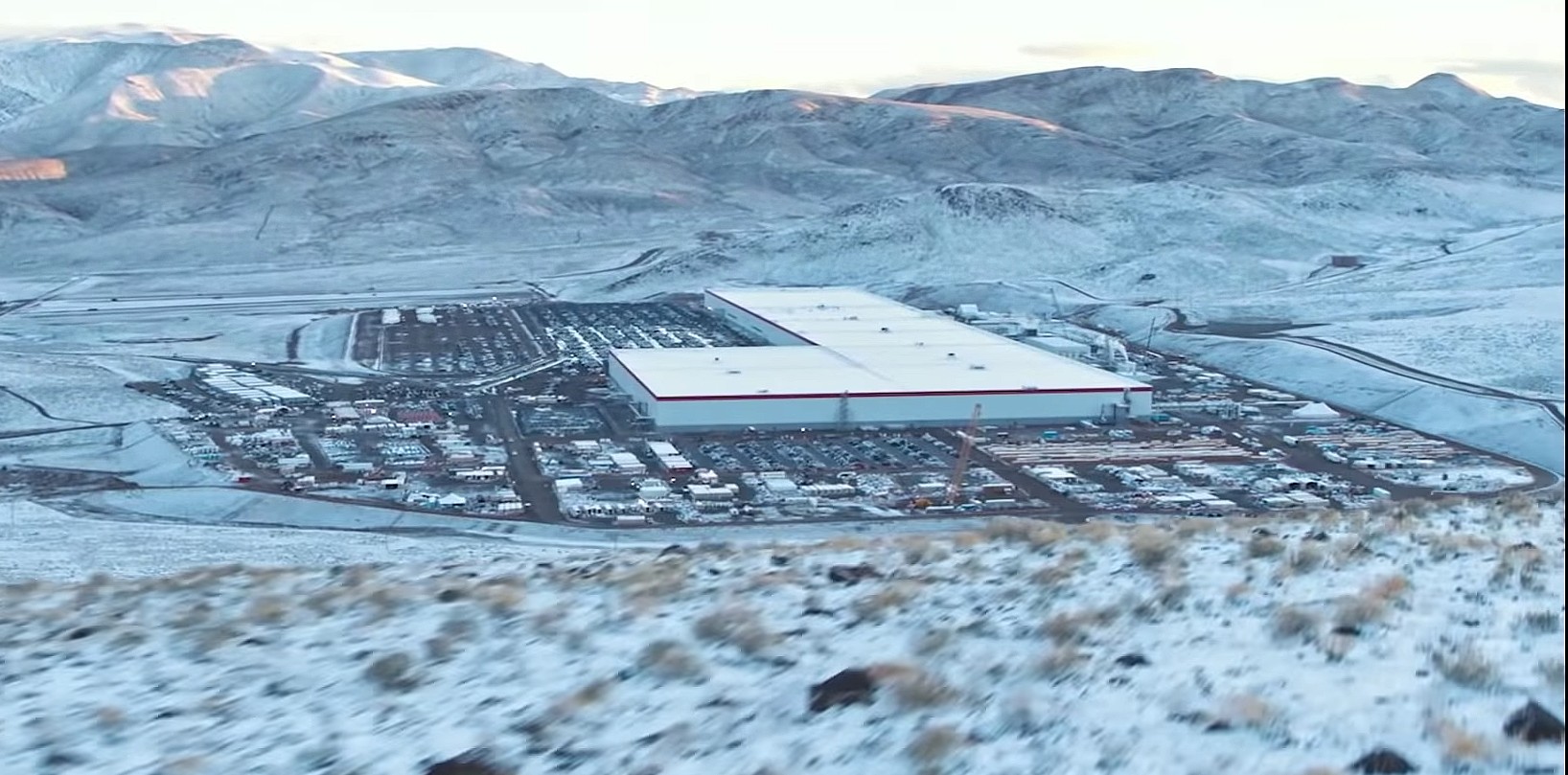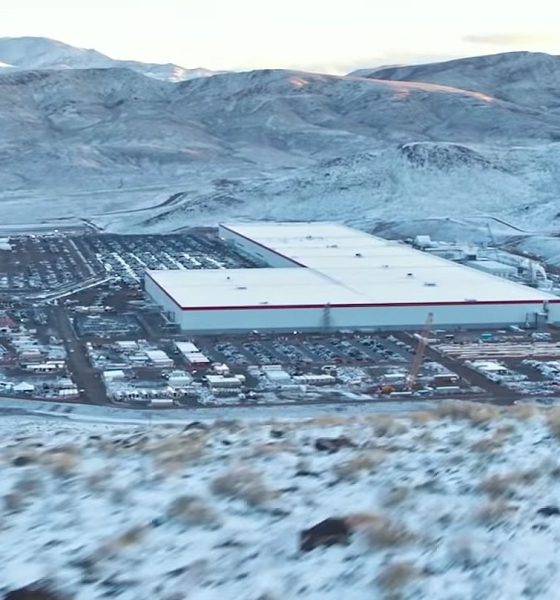

News
Tesla's focus on batteries is being proven right, and other EV makers are paying the price
As more and more automakers begin the transition to electric vehicles, it is becoming increasingly apparent that Tesla’s intense focus on batteries was right all along. Tesla’s strategies have always been criticized and examined under a microscope, and the company’s decision to build Giga Nevada, a facility dedicated to battery production for the Model 3, was no exception. But as veteran automakers like Jaguar and Mercedes-Benz are now finding out, investing tons of effort and resources on batteries matters a lot.
Tesla is among the industry’s most vertically-integrated companies. Similar to Apple’s consumer electronics and SpaceX’s rockets, most of what goes inside a Tesla electric car is designed and built in-house. Tesla is so serious about this; the company actually made its own seats. The same is true for the electronics that goes inside every Tesla. They are so different and superior to off-the-shelf components that teardown expert Sandy Munro compared them to the electronics of a literal fighter jet.

A lot of Tesla’s resources are dedicated to its battery improvements. Teslas stand tall among their rivals in the EV marketplace today primarily due to their efficiency and range, and this is made possible by the company’s battery tech. The company is not showing any signs of stopping too. Tesla has acquired several companies that could further improve its batteries, such as Maxwell Technologies and Hibar Systems. The electric car maker is even looking to produce its own batteries, with reports indicating that work is already underway to develop custom cells for Tesla’s next generation of vehicles and products.
It’s a difficult pill to swallow, but veteran automakers have reached a point where they must honestly admit that when it comes to batteries, Tesla has a notable lead. The very representation for this idea is the Porsche Taycan, an otherwise excellent high-performance electric vehicle whose ~200-mile EPA range is an Achilles Heel. Porsche, similar to other EV makers, opted for off-the-shelf batteries for the Taycan, and it shows. The car performs beautifully, and it’s arguably the only EV that can beat a Model S fair and square in a race, but it simply does not have the range or the efficiency to beat Tesla’s flagship sedan on all metrics.
It’s not just about the battery tech and specific cell chemistries either. Over the years, Tesla also had the foresight to secure ample battery supply for its vehicles and products. From Panasonic, which has been Tesla’s partner since its early days, to CATL, which is the company’s partner for Giga Shanghai, the electric car maker has made careful preparations to ensure that its vehicles and products will always have enough batteries. Other EV makers are not as fortunate.

This is one of the reasons why the Jaguar I-PACE, one of the most decorated vehicles in modern auto history, actually stopped production for a week. Just like the Taycan, the I-PACE is actually a pretty decent EV, with its plush interior and aggressive exterior. But behind the I-PACE’s looks lies off-the-shelf batteries that are also used by other companies. This meant that when LG Chem could not supply enough cells for the vehicle, Jaguar had no choice but to stop the vehicle’s production temporarily.
The Mercedes-Benz EQC is in the same boat. Once deemed as a potential “Tesla Killer,” the EQC’s production target for 2020 was halved by the German automaker from 60,000 vehicles to just 30,000 units. The reason was something that is pretty familiar: Daimler just could not secure enough batteries. Even companies like Dyson and Aston Martin, both of which had plans to make EVs, eventually suspended their efforts to enter the electric car market.
Tesla is not a perfect company by any means. CEO Elon Musk would be the first to admit that the company has made many mistakes over the years. But for all its delays and production issues, there is very little that can be criticized about Tesla when it comes to its batteries and the company’s foresight in improving them and securing their supply for years to come.

News
Tesla FSD fleet is nearing 7 billion total miles, including 2.5 billion city miles
As can be seen on Tesla’s official FSD webpage, vehicles equipped with the system have now navigated over 6.99 billion miles.

Tesla’s Full Self-Driving (Supervised) fleet is closing in on almost 7 billion total miles driven, as per data posted by the company on its official FSD webpage.
These figures hint at the massive scale of data fueling Tesla’s rapid FSD improvements, which have been quite notable as of late.
FSD mileage milestones
As can be seen on Tesla’s official FSD webpage, vehicles equipped with the system have now navigated over 6.99 billion miles. Tesla owner and avid FSD tester Whole Mars Catalog also shared a screenshot indicating that from the nearly 7 billion miles traveled by the FSD fleet, more than 2.5 billion miles were driven inside cities.
City miles are particularly valuable for complex urban scenarios like unprotected turns, pedestrian interactions, and traffic lights. This is also the difference-maker for FSD, as only complex solutions, such as Waymo’s self-driving taxis, operate similarly on inner-city streets. And even then, incidents such as the San Francisco blackouts have proven challenging for sensor-rich vehicles like Waymos.
Tesla’s data edge
Tesla has a number of advantages in the autonomous vehicle sector, one of which is the size of its fleet and the number of vehicles training FSD on real-world roads. Tesla’s nearly 7 billion FSD miles then allow the company to roll out updates that make its vehicles behave like they are being driven by experienced drivers, even if they are operating on their own.
So notable are Tesla’s improvements to FSD that NVIDIA Director of Robotics Jim Fan, after experiencing FSD v14, noted that the system is the first AI that passes what he described as a “Physical Turing Test.”
“Despite knowing exactly how robot learning works, I still find it magical watching the steering wheel turn by itself. First it feels surreal, next it becomes routine. Then, like the smartphone, taking it away actively hurts. This is how humanity gets rewired and glued to god-like technologies,” Fan wrote in a post on X.
News
Tesla starts showing how FSD will change lives in Europe
Local officials tested the system on narrow country roads and were impressed by FSD’s smooth, human-like driving, with some calling the service a game-changer for everyday life in areas that are far from urban centers.

Tesla has launched Europe’s first public shuttle service using Full Self-Driving (Supervised) in the rural Eifelkreis Bitburg-Prüm region of Germany, demonstrating how the technology can restore independence and mobility for people who struggle with limited transport options.
Local officials tested the system on narrow country roads and were impressed by FSD’s smooth, human-like driving, with some calling the service a game-changer for everyday life in areas that are far from urban centers.
Officials see real impact on rural residents
Arzfeld Mayor Johannes Kuhl and District Administrator Andreas Kruppert personally tested the Tesla shuttle service. This allowed them to see just how well FSD navigated winding lanes and rural roads confidently. Kruppert said, “Autonomous driving sounds like science fiction to many, but we simply see here that it works totally well in rural regions too.” Kuhl, for his part, also noted that FSD “feels like a very experienced driver.”
The pilot complements the area’s “Citizen Bus” program, which provides on-demand rides for elderly residents who can no longer drive themselves. Tesla Europe shared a video of a demonstration of the service, highlighting how FSD gives people their freedom back, even in places where public transport is not as prevalent.
What the Ministry for Economic Affairs and Transport says
Rhineland-Palatinate’s Minister Daniela Schmitt supported the project, praising the collaboration that made this “first of its kind in Europe” possible. As per the ministry, the rural rollout for the service shows FSD’s potential beyond major cities, and it delivers tangible benefits like grocery runs, doctor visits, and social connections for isolated residents.
“Reliable and flexible mobility is especially vital in rural areas. With the launch of a shuttle service using self-driving vehicles (FSD supervised) by Tesla in the Eifelkreis Bitburg-Prüm, an innovative pilot project is now getting underway that complements local community bus services. It is the first project of its kind in Europe.
“The result is a real gain for rural mobility: greater accessibility, more flexibility and tangible benefits for everyday life. A strong signal for innovation, cooperation and future-oriented mobility beyond urban centers,” the ministry wrote in a LinkedIn post.
News
Tesla China quietly posts Robotaxi-related job listing
Tesla China is currently seeking a Low Voltage Electrical Engineer to work on circuit board design for the company’s autonomous vehicles.

Tesla has posted a new job listing in Shanghai explicitly tied to its Robotaxi program, fueling speculation that the company is preparing to launch its dedicated autonomous ride-hailing service in China.
As noted in the listing, Tesla China is currently seeking a Low Voltage Electrical Engineer to work on circuit board design for the company’s autonomous vehicles.
Robotaxi-specific role
The listing, which was shared on social media platform X by industry watcher @tslaming, suggested that Tesla China is looking to fill the role urgently. The job listing itself specifically mentions that the person hired for the role will be working on the Low Voltage Hardware team, which would design the circuit boards that would serve as the nervous system of the Robotaxi.
Key tasks for the role, as indicated in the job listing, include collaboration with PCB layout, firmware, mechanical, program management, and validation teams, among other responsibilities. The role is based in Shanghai.
China Robotaxi launch
China represents a massive potential market for robotaxis, with its dense urban centers and supportive policies in select cities. Tesla has limited permission to roll out FSD in the country, though despite this, its vehicles have been hailed as among the best in the market when it comes to autonomous features. So far, at least, it appears that China supports Tesla’s FSD and Robotaxi rollout.
This was hinted at in November, when Tesla brought the Cybercab to the 8th China International Import Expo (CIIE) in Shanghai, marking the first time that the autonomous two-seater was brought to the Asia-Pacific region. The vehicle, despite not having a release date in China, received a significant amount of interest among the event’s attendees.








